Even aging dogs can learn new tricks. I’ve been holding classes in the nearly tropical southern end of the state for a couple of years. That is one of the nice and maddening things about foraging in Florida: Its plants range from temperate to tropical to the outrageously ornamental but that adds to the variety even if it does take a lot of work and study. There is always a new edible to be learned, usually imported.
In West Palm Beach where I teach there is a pretty ground cover, clearly a pea which is a family with edible and toxic species. When I first started my classes there a landscaper told me the cover was “Rabbit Bells” and toxic. I thought no more of it. About a year later someone said it was a perennial peanut and toxic. Again, I ignored the ground cover though it is attractive with bright yellow pea blossoms. During last Saturday’s class a chef told me she eats the blossoms. That got my attention.
First was to identify the plant. “Rabbit Bells” got me no where. Perennial Peanut did better. From there I found Arachis glabrata, which botanists call by the spiffy name of Rhizoma Peanut. It is also called Rhizomal Perennial Peanut, Perennial Forage Peanut, Golden Glory, and Ornamental Peanut Grass… none of them really catchy. It’s related closely to the peanut we eat, Arachis hypogaea (which by the way has edible stems and leaves, raw or cooked.)
My first reference of choice, Cornucopia II, had nothing on the “Perennial Peanut” nor did my trusty standby, the Journal of Economic Botany. On-line, where I am loathe to do research unless absolutely necessary, I turned up little. It is grazing fodder native to Brazil. No mentions in English of humans eating it. But I did find a study in which researchers fed leaf powder to hens to see if it increased the intensity of yoke color. That can go both ways. It would seem reasonable they would not feed something toxic to hens for a product humans eat but they do exactly that with arsenic. That chemical is a disease preventative in chickens. So feeding hens Perennial Peanut leaf powder was no sign it was edible by humans. Finding no good sources I did what I have done many times in the compilation of this site: I wrote to one of the foraging study researchers, Benjamin Anderson, asking if he knew if humans could eat the plant. He wrote back.
“Yes, I know that a lot of people eat the blossoms and they actually taste like peanuts. I have even heard of them being used in salads. Just be careful eating anything where there may have been chemicals sprayed, though.” That’s encouraging and I would add yellow blossoms eaten in quantities also tend to be a laxative. It looks like the Perennial Peanut will have to be added to the list of edible imports into Florida (and Georgia and Alabama.) That also means I need to write an article about it… or do maybe even a video.
Overnight temperatures dipped into the upper 60’s this past week as a reminder that winter is on its way though winter here is mild. By coincidence I happened to see a winter annual of ours that I usually don’t even start looking for until December, Cucumber Weed, or Pellitory. It’s a tasty and common cold-weather edible that totally surprised me. (I think most foragers would agree the usual seasonal patterns of some wild edibles are quite off.) I was rummaging around Spring Hammock Preserve in Seminole County where I saw some young plants. In my experience that is more than extremely early. I have never seen it this early. That makes me wonder how long or short the Pellitory season is going to be this year. We will just have to wait and taste.
In and almost out of season depending where you are now is Sea-grapes. In south Florida this past weekend there were still a few left on the trees (and quite a few if you don’t mind battling the ants on the ground.) Like persimmons, which are also in season, grounded Sea-grapes can be sweet, if not slightly fermented. And what a difference 200 miles can make. In the center of the state Sea-grapes make a shrub barely taller than six or seven feet. In south Florida they are tall trees. Also on the seasonal wane are coco-plums. All we found were a few white ones, the other color varieties were fruitless. But we did manage to see some late season (who knows now, maybe early season) Simpson Stopper berries. On the marmalade side they might be an acquired taste. And to top out the seasonal dance some Poor Man’s Peppergrass was sprouting anew in South Florida. While it technically grows all year here it heavily favors the winter and spring. Again, two months ahead of time. It might be an unusual winter, and spring.
Plants just grow. They don’t have to ask what’s the meaning of life. They are life and they grow, given the right environment. They don’t even care who their neighbors are. I was reminded of that this past Sunday as I wandered along Spring Hammock Preserve. A low tongue of land subject to the flooding by Lake Jesup (part of the St. Johns River) a drainage canal was once dredge there. Rumors of buried treasure have persisted for more than a century. In the dribbling bottom of what’s left of that canal I saw an unlikely pair of plants growing together. One was a wax begonia, the common household variety. It has escaped cultivation and is naturalized in the state. Begonias are very edible. Right next to it was the extremely deadly Water Hemlock, happily sharing the same little ditch. It also explains why one has to forage very carefully. Not only do you have to make sure you are picking the right plant but you don’t want to get any of the wrong plant at the same time. The other odd element is that cultivated begonias do not like to be waterlogged. Yet, every time I have seen one in the wild they are growing in very wet areas. ‘Tis a mystery.
Also pushing the season this year are Ringless Honey Mushrooms, Amillaria tabescens. They are esily a month ahead of time for this area. The culinary opinion is extreme on these mushrooms with one expert calling them “inedible” and another “choice” which in mushroom parlance is between edible and excellent. They do have to be cooked more than most mushroom in that they are slightly tougher and have some enzymes best cooked away. While fairly easy to identify they have a couple of look-alikes, one that will upset the digestive system (Omphalotus illudens) and one that can you (Galerina autumnalis.) So identifying Honeys for certain is important. The Ringless Honey Mushrooms have a white spore print, the deadly Galerina’s spore print is rusty orange/brown so separating those two is fairly easy. The Galerina also has a ring around the stem which the Ringless Honey Mushroom does not have. The gastrointestional irritating Jack O’ Lanterns, Omphalotus illudens, unfortunately also have a white spore print. However, they are more orange colored than brown. Also the Jack’s are orange through and through. The Honeys are brown on the outside, white inside. Again, never identify a mushroom from just descriptions here or on the internet. Learn from someone in person. (I have also started two mushroom identification forums on Facebook, Florida Mushroom Identification Forum, and Southeastern US Mushroom Identification.)
There was a publication a few years ago called “How To Live With A Calculating Cat.” Anyone who has had a bright cat knows what that means. I have two cats, Couscous, who’s a brown and black sweetie pie… Miss Congeniality. And then there is independent Ollie whom you may have spied in a video or two. He’s a feline Einstein. If there is a noise in the house I know which cat did it. If there is someone missing; it is always Ollie. Something broken? Ollie. Half a cold dead lizard where I put my bare feet? Ollie. A calculating cat. Now, mushroom hunters carry a basket. It’s a serviceable tradition that works well with fungi. The other day I put my mushroom basket down next the door just before going out because I forgot something. When I returned to leave…
A reminder the Florida Herbal Conference 2014 will be held in Deland again this coming February. Joanna Helms, RH (AHG), a 6th generation Floridian, will be among the teachers. She has been in clinical herbal practice for 16 years, and is the founder of Mama Jo’s Sunshine Herbals in Indian Harbour Beach, Florida. And again this year there is an early bird special for those who sign up before Oct. 31 and use the code EATTHEWEEDS. For the third year in a row I will be leading weed walks at the herbal conference, a challenge in winter on dry ground. The walks are usually first thing in the morning when the air is cool and camp fires warm. Although it is the Florida Herbal Conference it draws teachers and students from all over North America. And as mentioned above you get a discount because you read this newsletter.
Even though my foraging videos are for free on the internet some foragers like to have their own copy. My nine DVDs have 15 videos each, from 01 to 135, and come in nine cases each with a picture of yours truly on it. In the process of moving the videos to DVS some of them were enhanced slightly from the version on the Internet. In a few months I hope to have volume 10 available as well. I print and compile the sets myself so if you have any issues I handle it personally. There are no middle men. To learn more about them or to order the DVS click here.
There will be no newsletter on October 29th as this month has five Tuesdays and Green Deane is going take that time off (and recover from a Greek festival the weekend before.)
To donate to the Green Deane Newsletter click here.

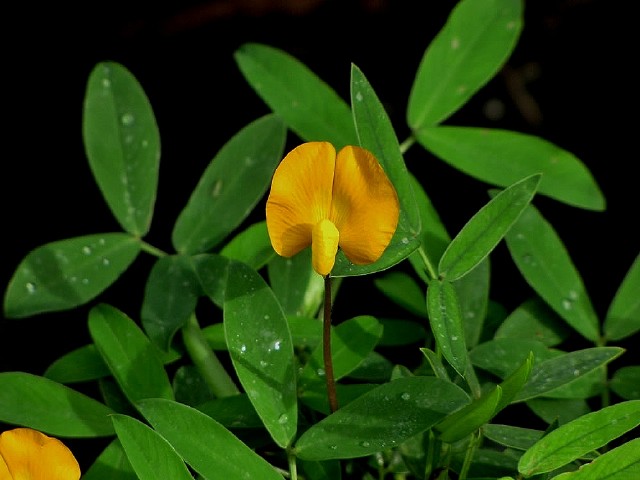
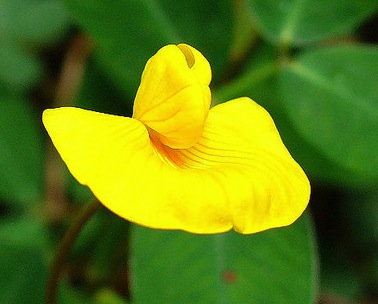
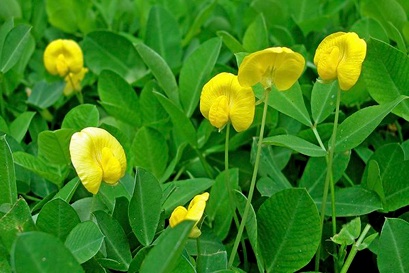
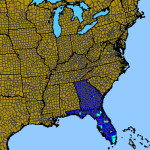
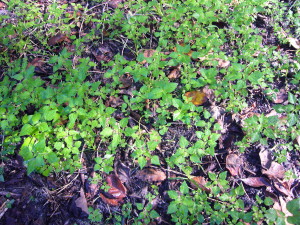
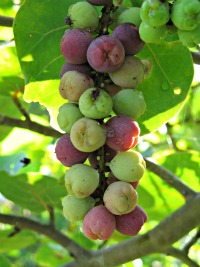
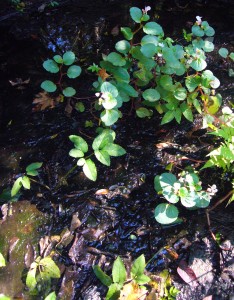
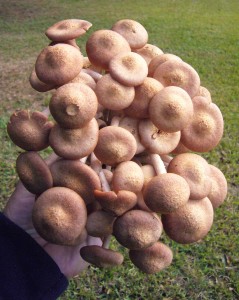
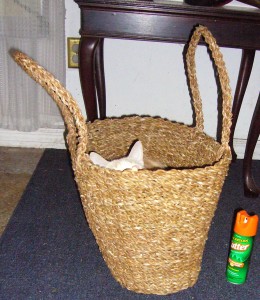



Have a great week off and eat lots of the glorious Greek food! Wish I were there. Meantime, loved the photo of your kitty.
He’s an imp.
I am a bit confused by Simpson Stopper. When I lived in Ft.Pierce, and later the Keys, I found Spanish Stopper in great quantities. Locals also called the Spanish Stopper – ‘Naked Wood’. It looks very similar to the photo of Simpson Stopper in Your archives. Are they the same plant, or just another genus of Stopper? Thanks for wonderful newsletters and the quality research you do. Your photos and text are far better than most of my plant I.D. books, so you have become one of my chief research sources.
Chaz Mikell
Spanish Stopper is a different stopper (There are some 18 of them.) It is Eugenia foetida, and the berries are edible.
I know how to grow the peanut plant – Arachis hypogeae . I had the opportunity when I was living in a house with a large back garden in University of Gezira (Sudan) . My children were enjoying the many happy occasions of pulling bundles of peanuts pods off the soft silty soil, washing and roasting them after salting them. How generous is mother earth giving more than a kilogram per only one little seed! Remember how much water is needed after the good taste of the salted roasted peanuts; but be aware as a few people may be allergic to certain proteins in peanuts. In this context may I ask whether it is true or false to avoid eating that tiny part between the cotyledons of the peanut – i.e. the embryonic root and shoot – as it is assumed that it is carcinogenic. As for Aracis glabrata, I can tell of two well known plants : apart from enriching the fertility of the soil, both legumes Pigeon pea (Cajanus cagn) and Hyacinth bean (Lablab purperius) are grown for human consumption and livestock in various states of Sudan (Please refer to: http://www.cbd.int/doc/world/sd/sd-nr-04-en.pdf ).
Any idea where a homeowner can buy the Rhizoma peanut?